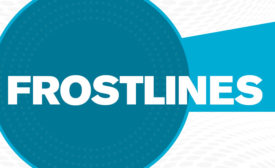Articles by Ron Rajecki
Industry sponsorship of a bowl game could help attract new young talent to the industry
Read More
Montreal Protocol Sets Global HFC Phasedown
Secretary of State John Kerry calls it ‘a new chapter in the fight against climate change’
Read More
A Quest for Healthy Patients and Hearty Bottom Lines
Contractors help hospitals meet regulations and control costs
Read More
Harrowing Hospitality: Hotels Need Heaps of HVAC Help
Under constant pressure, hotel operators can benefit from a professional contractor’s advice
Read More
Commercial Equipment Crafted for Institutional Settings
HVAC products designed to provide comfort in multitenant facilities
Read More
Breathe Easy With a Good Ammonia Safety Program
Prevention, mitigation, and preparation can save lives
Read More
Constantly Changing Refrigerant Regulations Make Customers Wary
‘Didn’t we just do this?’ as GWP joins ODP in paving way for phaseouts
Read More
Think Times Are Tough? Don’t Lose Sight of How Far We’ve Come
A bike ride and a historical marker lead to a new perspective on the refrigeration industry
Read More
OSHA Aims to Save Lives with Refrigerant Labeling Mandate
The globally harmonized system — OSHA’s new hazard communication standard — is here
Read More
Restaurateurs Insist Qualified Contractors are Important Ingredients
Food service entrepreneurs rely on refrigeration for perishables, profits
Read More
Copyright ©2025. All Rights Reserved BNP Media.
Design, CMS, Hosting & Web Development :: ePublishing


![695552959_ceec46c8c5_o[1].jpg The nations of the world have agreed to amend the Montreal Protocol in 2016 to reduce the production and consumption of HFCs globally.](https://www.achrnews.com/ext/resources/2015/11-2015/11-23-2015/695552959_ceec46c8c5_o1.jpg?height=168&t=1448043462&width=275)





